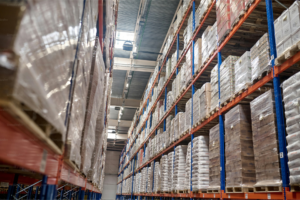Recently we had the opportunity to catch-up with Wandr shipping expert Callum White about the real-world challenges and solutions he has found working with various businesses in the cross-border and eCommerce space. Continue reading to find out what he had to share.
A note to UK sellers who are exploring shipping D2C into Europe
I speak to UK sellers every day who are weighing up whether to begin selling into the European market. Some of these sellers experienced success in the continent pre-Brexit, but logistical challenges saw them withdraw in the following months. Many of these are yet to restart, and new sellers, established post-Brexit, are put off by what they see as hassle and mixed messages.
But facts are facts – the European Union alone has around 450 million people living in it. And sellers recognise that if they can get it right in Europe, it would provide not only a supplementary stream of sales to sit alongside their primary UK volume, but a significant sales channel that could surpass it. So why do so few UK sellers actually enter the European market?
“I can’t achieve good enough shipping rates to make it work economically.”
The reality is that most carriers aren’t interested in one or two items a day. It won’t make them any money. So, if you’re going from a standing start, there are a few options.
The most obvious one is to try and achieve the most competitive cross-border rates with the carrier who is delivering your domestic orders. They should be collecting from you regularly & therefore a collection from your warehouse shouldn’t need to be factored into their costs.
The challenge with this approach is that you are relying on the international service offering of your domestic carrier. You can’t shop around. And with most things, this isn’t ideal.
The second option is our preference, but it takes good communication and flexibility on both the part of the seller and the shipper.
In the carrier world, there are such things as “multi-carriers”. These are specialist logistics companies who either re-sell carrier rates or even better, manage the whole process of export from first mile to injection into the final mile carrier in-country. These carriers have the benefit of pooled volume built up from their existing client base. This means they are able to offer very competitive shipping rates to sellers who don’t have a lot of it to begin. They are usually better placed to take a “long-term view” and work with the seller to help them grow their volume overseas.
It may still be the case that the multi-carrier asks you to start off by delivering into their hub or will arrange the collection but ask you to foot the bill. The main thing is that you have a partner who is willing to work with you to help grow your volumes & ensures you maintain a healthy profit by offering you economically viable international shipping rates.
“I’ve been told I can’t clear my product into Europe & don’t want to risk having items returned.”
There are certain products that currently cannot be cleared D2C into Europe. Take alcohol, for example, if you want to enter the European market, you’re finding a 3PL that has a bonded warehouse and an alcohol license. You wouldn’t even bother asking a carrier.
But there are many products that fall into a grey area where clearance is concerned and many sellers have had their fingers burnt, being assured by their carrier that clearance is possible and then having the items returned to them. No wonder these sellers are wary.
To be confident, sellers need to focus on the Harmonisation Codes (HS Codes) of their products, and alongside checking on the Gov.uk trade tariff website, it’s worth checking with your carrier partner to make sure this works with their own clearance methods.
In cases where sellers have many HS Codes, or products that might trip them up (e.g. goods containing animal products), a responsive carrier partner is critical to give you the confidence to begin. Due diligence is needed and a “multi-carrier” partner can support you with this.
“I keep being told to register for IOSS & it seems expensive when I don’t have the sales volume.”
The Import-One-Stop-Shop is a mechanism created post-Brexit for duties and taxes to be paid at checkout. It ensures that sellers can ship into Europe on DDP services, so their customers don’t get hit with the taxes and duties when the item arrives at their front door. It’s a fairly simple process to register – and there are numerous tax providers who can help brands with this registration – but it comes with an initial and on-going cost.
Many sellers don’t feel they can justify the registration costs especially when they view the venture into Europe as a trial run. The good news is that an IOSS registration is not mandatory & there are a few ways to begin shipping into Europe without the use of one.
The first key point to note is that if you plan to sell on Amazon – or other marketplaces – you don’t need an IOSS number. You can simply use the marketplace’s. This allows you to use marketplaces to begin shipping cross-border without any major start-up costs.
Naturally, lots of sellers prefer to sell on their own websites as they retain more of the profit. This can still be done into Europe, but you simply have to use a “non-IOSS” shipping service. This is where the carrier partner has their own tax deferment account, they pay any taxes and duties on the seller’s behalf, and then bill the cost back to them. The shipping rates tend to be a little higher for non-IOSS routes because certain shipping lanes aren’t available. But it does give sellers a low-cost, low investment means to start shipping into the continent.
Final Word
There are so many UK sellers who explore the possibility of shipping into Europe, and then store the idea away for another day. There are problems in the warehouse, staff are off sick, they need to update the imagery on their website, or focus on the launch of a new product. Expanding cross-border drops to the bottom of a long, never-ending list.
But with just a little bit of focus – a few conversations with a shipping partner, a check of your HS codes, listing your products on a few European Amazon marketplaces – you can be set for the first phase of your cross-border journey. In most cases, it really isn’t that complicated.
If you’re thinking of starting, I’d be more than happy to talk it over with you. Feel free to send me an email at [email protected] and we can take it from there.
You might also like:

How to Calculate Inventory Turnover
This guide covers the importance of inventory turnover, how to calculate it, and how to use this metric to enhance your supply chain and ensure a seamless customer experience.

8 Warehouse Ideas for Revenue
Running a warehouse can be a significant financial undertaking, particularly with the varying costs associated with renting warehouse space and managing additional expenses like utilities

How to Choose a Warehouse Management System (WMS)
Learn how to choose the right Warehouse Management System (WMS) with key features, vendor criteria, and implementation tips.

How to Set Up Smart Stock Control
Learn what is smart stock control, how it benefits online retailers and how to set it up in Despatch Cloud Warehousing.
